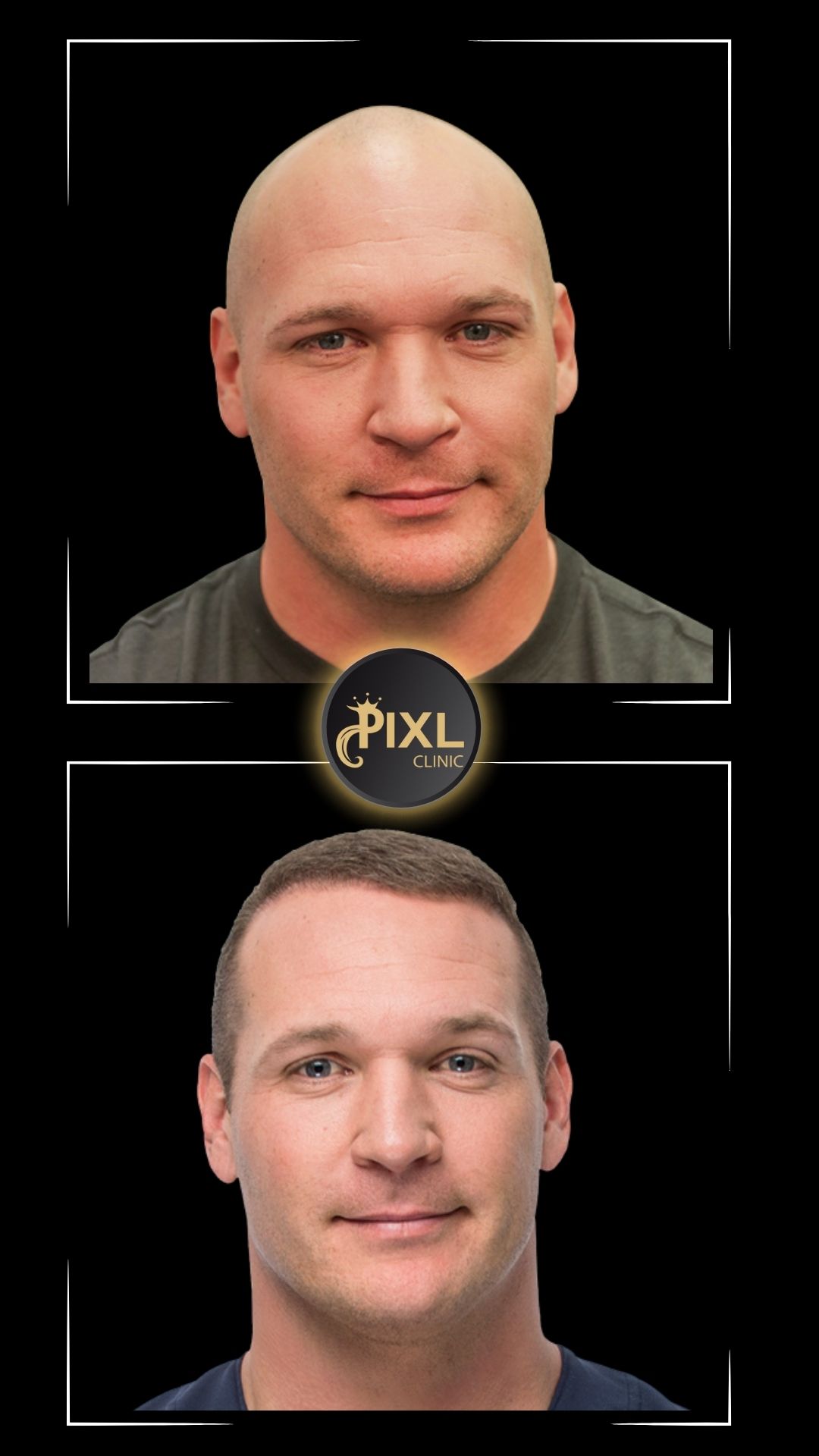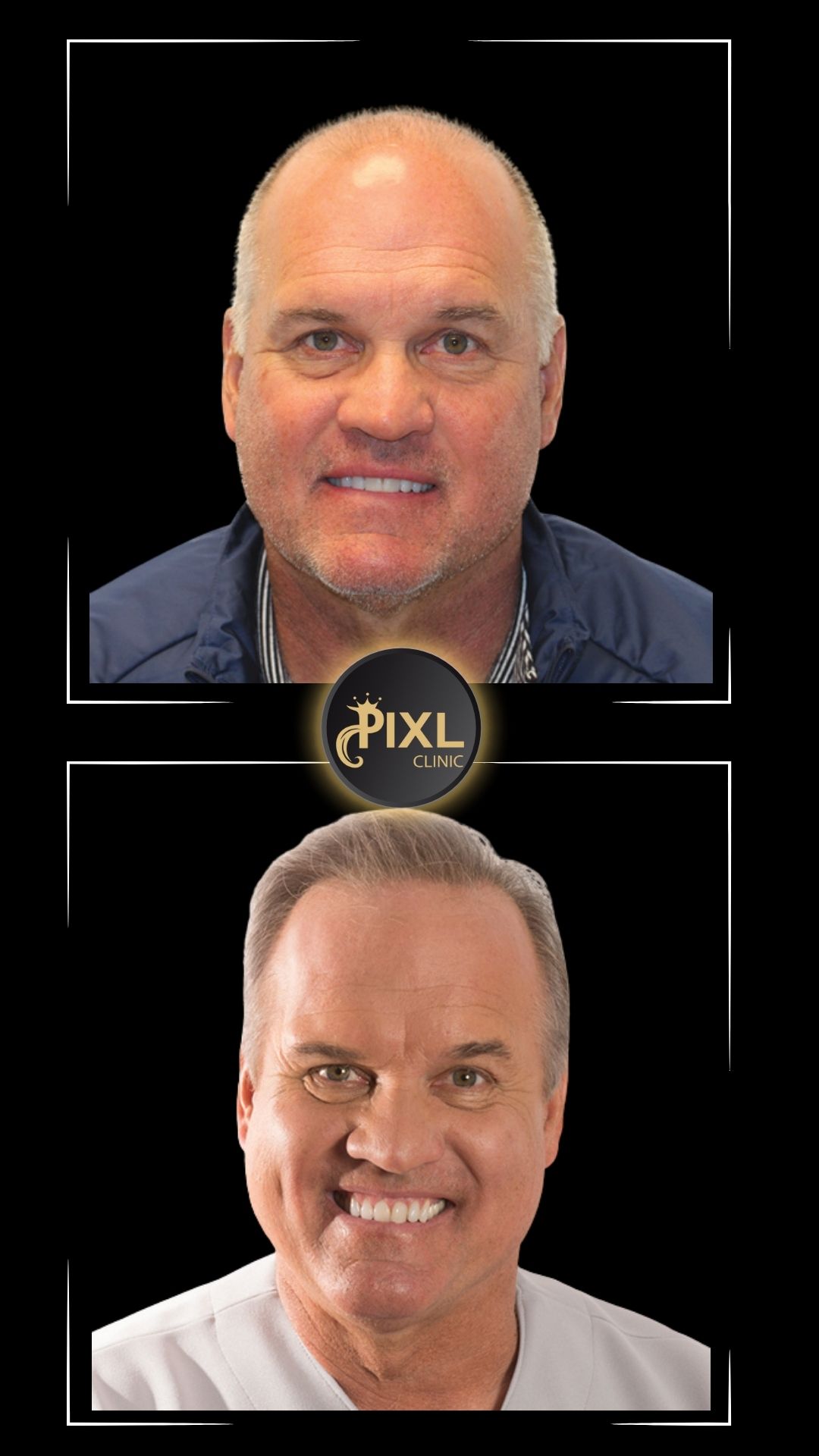Haircut After Hair Transplant: A Guide to Caring for Your New Hair
A hair transplant is a significant step in addressing hair loss, and while the procedure can restore your hairline, the journey doesn’t end once the transplant is complete. One common concern for many people after a hair transplant is when and how to get a haircut. After all, you want to enjoy the benefits of your new hair without damaging the follicles or hindering the results. This blog will walk you through the healing process and give you the essential guidelines for getting a haircut after your hair transplant.
The Healing Process After a Hair Transplant
Before discussing haircuts, it’s important to understand the typical stages of healing after a hair transplant:
Immediate Post-Op Period (First Week):
- The transplanted area will be sensitive, and scabs may form around the newly implanted follicles. This is a crucial time to avoid any irritation or injury to the grafts.
Shedding Phase (Weeks 2-4):
- The transplanted hair may fall out within the first few weeks. This shedding is completely normal as the follicles go into a resting phase, preparing to regrow new hair.
Initial Growth Phase (Months 3-4):
- New hair begins to grow in, though it may be fine and thin at first. It’s important to avoid stress on the scalp during this phase.
Significant Growth (Months 6-12):
- The hair starts to thicken and fill in, and you will begin to see fuller growth. At this point, the hair transplant results become more noticeable.
Maturation Phase (Up to 18 Months):
- Full results are visible, and hair continues to thicken, settle into its new position, and gain more texture.

So, When Can You Get a Haircut?
Understanding the right time to get your first haircut after a hair transplant is crucial. Here’s a breakdown of when you should consider cutting your hair:
0-2 Weeks Post-Transplant: No Haircuts Yet
- Don’t Cut the Hair: Right after your transplant, your scalp will be very sensitive. The grafts are still settling in, and cutting your hair too soon can dislodge the transplanted follicles. It’s best to avoid any haircuts during this period.
- Focus on Healing: Gently follow your surgeon’s post-op care instructions, including proper scalp washing and avoiding any irritation.
3-4 Weeks Post-Transplant: Light Trimming Only
- Donor Area Haircuts: The hair in the donor area (usually the back or sides of your head) will be healing well by now. You can gently trim the hair in this area with scissors, but avoid cutting the transplanted area.
- No Clippers or Razors: Avoid using clippers or razors on the transplanted hair, as this can disrupt the growth of the new follicles.
1-3 Months Post-Transplant: Light Cutting of Transplanted Hair
- Haircuts are Possible: At this point, some transplanted hairs will begin to shed (this is normal). The new follicles will begin to settle in, and you can carefully trim your hair. It’s important to avoid cutting or shaving the transplanted area too aggressively, as the hair follicles are still developing.
- Go to a Skilled Barber: If you choose to get a haircut, make sure you see a barber or stylist who is familiar with hair transplants and understands the delicate nature of the transplanted area.
3-6 Months Post-Transplant: Regular Haircuts Can Begin
- Hair Transplants Are Secure: By the three-to-six-month mark, the transplanted follicles will be more established, and you can resume regular haircuts. Your hair will begin to thicken and grow faster, but it may still be relatively short and fine.
- Trim and Shape: At this stage, you can cut and style your hair with more freedom. However, it’s still important to avoid rough treatment.
6-12 Months Post-Transplant: Full Growth and Styling
- Haircuts as Usual: After the six-month mark, the transplanted hair will have grown significantly and thickened. You can now enjoy regular haircuts, hair color treatments, and more advanced styling options without concern.
- Enjoy the Results: By now, your hair should look fuller, and you can start enjoying more varied styles.
Key Tips for Post-Transplant Haircuts
- Choose a Barber Who Knows About Hair Transplants: Not all barbers or stylists may be familiar with post-transplant care. Make sure to tell them about your transplant so they can take extra care when cutting your hair.
- Use Scissors, Not Clippers: Clippers can sometimes pull or tug at your hair, which might harm the new follicles. Stick to scissors for a gentler approach, especially in the early months.
- Be Gentle: Even when you can get a haircut, avoid harsh pulling or tugging on the hair. This could affect your results, especially during the early growth phases.
- Avoid Chemical Treatments: While it’s tempting to get a dye or perm after a transplant, it’s best to wait at least 6 months before using any harsh chemicals on your new hair.
- Stay Hydrated and Follow Your Doctor’s Instructions: A healthy scalp and hair growth depend on proper care. Follow your doctor’s recommendations for moisturizing and scalp treatments.
Conclusion
After a hair transplant, patience is key when it comes to haircuts. Timing is crucial to ensure the best results and prevent any damage to your newly transplanted follicles. By waiting until your scalp has fully healed and your hair has started to grow, you can safely enjoy haircuts and styling that will enhance the results of your transplant.
Remember to always consult with your surgeon for the best post-operative care and follow the recommended guidelines. A hair transplant is a long-term investment, and with the right care, you’ll enjoy a fuller, thicker head of hair for years to come.
FAQ: Haircut After Hair Transplant
When can I get my first haircut after a hair transplant?
It’s recommended to wait at least two weeks before considering any haircuts. During the first two weeks, your scalp will be sensitive, and the transplanted follicles are settling in. After that, you can start trimming the donor area but avoid cutting the transplanted hair.
Can I shave my head after a hair transplant?
It’s best to avoid shaving your head for at least 6 months after the transplant. Shaving the transplanted area can potentially harm the grafts and hinder the growth process. Wait until the follicles are more securely established.
Can I cut the transplanted hair with scissors after a month?
After about one month, you can trim the transplanted hair gently using scissors. However, avoid using clippers or razors on the transplanted area as it can cause stress on the new follicles.
When is it safe to color or dye my hair after a transplant?
It’s recommended to wait until at least six months after the transplant before coloring or using harsh chemical treatments on your hair. This gives the transplanted hair time to fully settle and mature.
Can I get a haircut with clippers after a transplant?
Avoid using clippers or razors on the transplanted hair until it is fully grown in and secure. Clippers can tug or pull the hair, potentially damaging the delicate new follicles. Stick to scissors for any trimming during the first few months.
Will my hair fall out after my first haircut post-transplant?
Some shedding is normal during the first few months after the transplant, including after haircuts. This is part of the natural hair cycle, as the transplanted hair falls out and makes way for new growth. It’s nothing to be concerned about.
How long does it take for transplanted hair to grow in fully?
Transplanted hair typically starts to show significant growth at around 3-6 months post-surgery, with full results visible by 12-18 months. However, early results may be thinner and finer.
Can I style my hair right after the transplant?
After 3-4 months, you can begin to style your hair gently. Avoid using heat styling tools and harsh chemicals until the transplanted hair is stronger, usually after six months.
Is it safe to use hair products after a hair transplant?
You can start using mild, gentle hair products like sulfate-free shampoos after the first few weeks. Avoid products with strong chemicals or alcohol, especially during the first 3 months, as they may irritate the scalp.
How soon can I return to my normal haircut routine?
You can return to regular haircuts and styling after about 6 months when the transplanted hair is established, thicker, and stronger. By this time, the hair will have grown to a point where you can enjoy the full benefits of the transplant.
Will a haircut affect the growth of my transplanted hair?
As long as you’re careful and use scissors rather than clippers, a haircut will not negatively impact the transplanted hair growth. Just avoid aggressive cutting and give the hair time to heal during the first few months.
What if I cut the transplanted hair too soon?
Cutting the transplanted hair too soon or roughly can potentially dislodge the newly planted follicles or damage the growth process. It’s important to follow the recommended timeline to avoid interfering with the healing phase.
Should I inform my stylist about my hair transplant?
Yes, always inform your stylist or barber about your hair transplant. A stylist with experience in post-transplant care will be more cautious when cutting your hair and can avoid techniques that could harm the newly transplanted follicles.
How can I ensure the best results after my hair transplant?
Follow your surgeon’s aftercare instructions, avoid strenuous activities that may cause scalp irritation, wait the recommended time for haircuts and styling, and maintain a healthy hair care routine. Patience and gentle care are key to getting the best results.
Can stress or a bad haircut affect the transplant’s success?
While stress itself won’t affect the transplant’s success, a bad haircut or rough handling of the transplanted area could potentially harm the follicles. It’s important to handle your hair with care during the recovery process to ensure the best outcome.

















